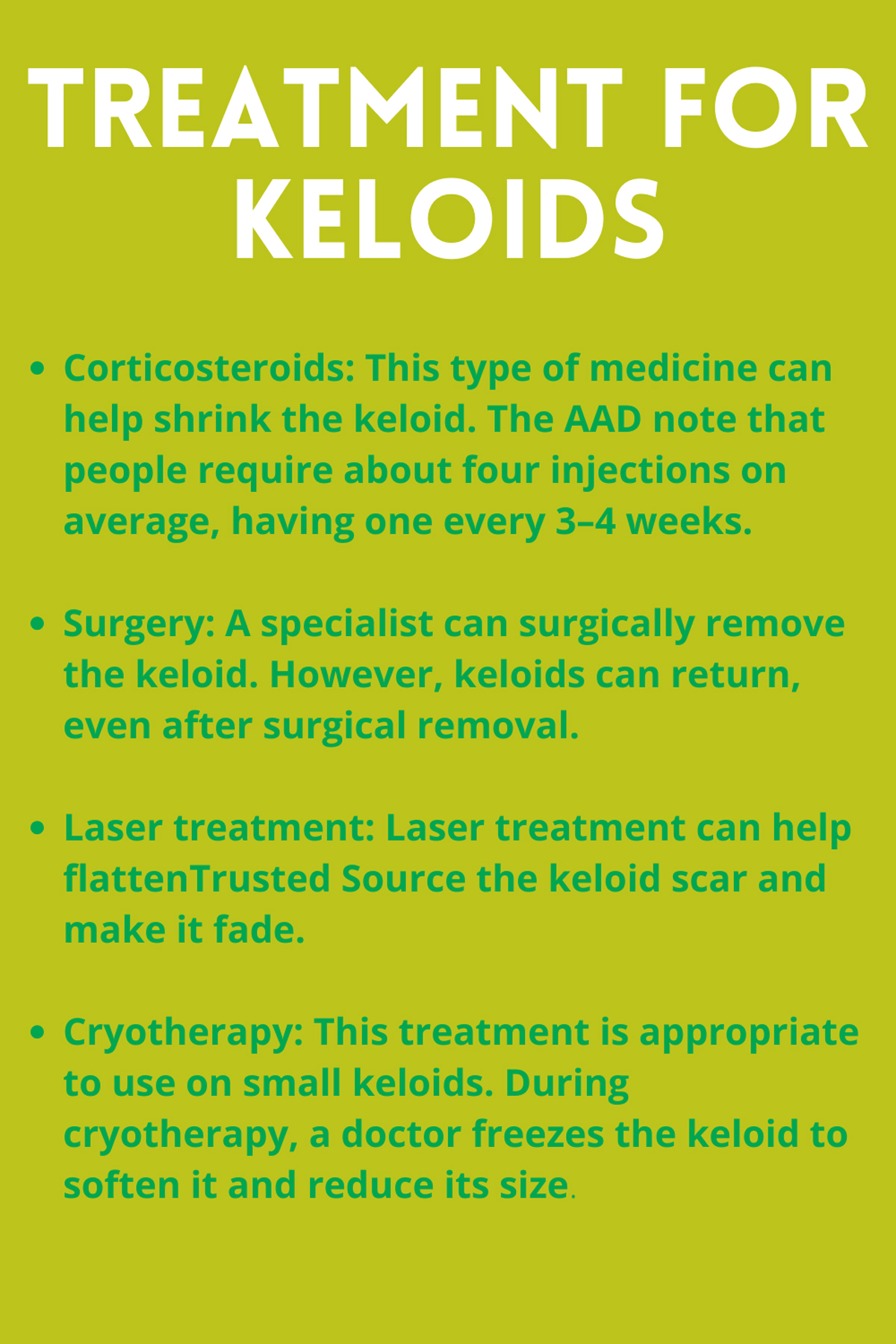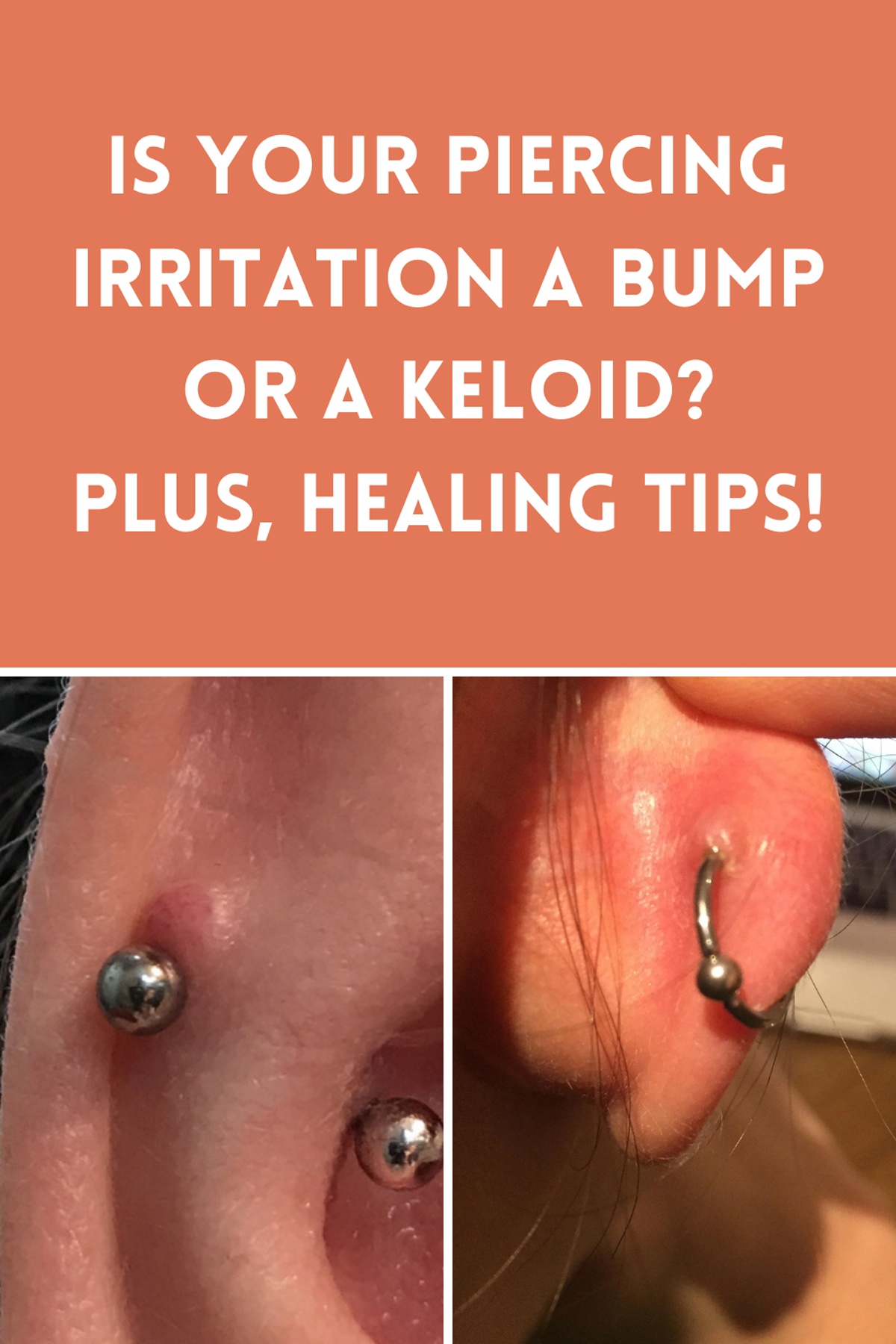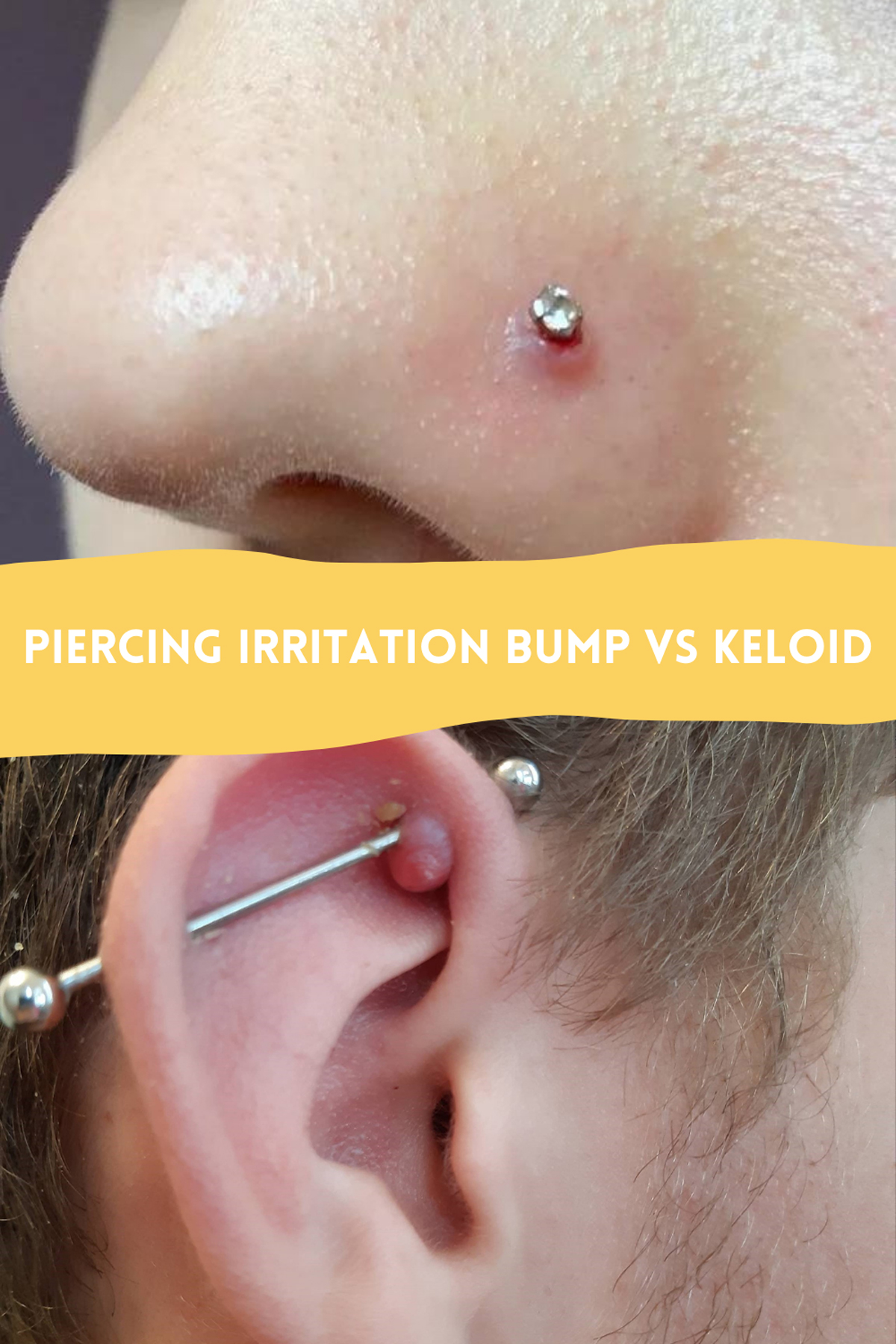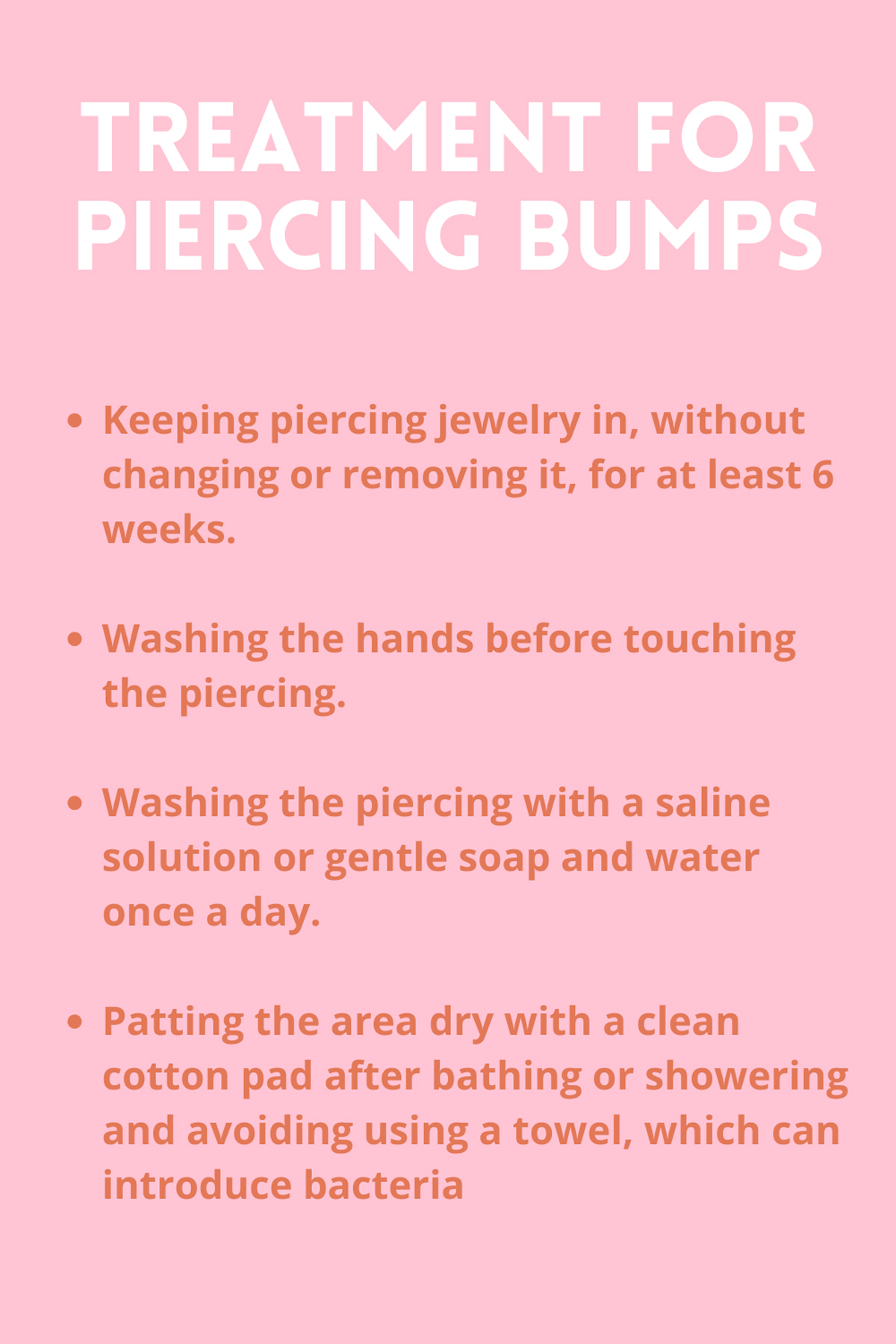Inside: Is Your Piercing Irritation a Bump or a Keloid? Let’s figure it out and make a plan to heal it today.
If you’re a fan of jewelry, getting a new piercing can be oh-so-exciting. But what happens if you look in the mirror to admire your bling, only to find a mysterious lump? Well, it may be a piercing bump or keloid, which can be difficult to tell apart.
Piercings are long healers, and during that time they can get irritated. Many people have heard of the dreaded piercing bump.
There is a ton of information about these on the internet.
It’s a keloid, it’s a granuloma, its infected, your ear is gonna fall off.
The good news is, there is no reason to panic. It will heal and go away, with some time, the right treatment and TLC.
We are giving you a total rundown on why these bumps happen, what causes them, how to get them to go away, and most importantly, what not to do.
Check out to tell if you have a piercing bump vs keloid and how to help your new piercing heal!
Piercing Irritation Bump vs Keloid
First, let’s talk about the difference between a piercing bump and a keloid.
Irritation Bump
Piercing bumps are small lumps that can appear after a piercing. They often occur following cartilage piercings, such as nose or upper ear piercings.
Piercing bumps occur when the body’s immune system responds to the wound and initiates the healing response. This response leads to inflammation, which is what causes the bump.
A person may notice bleeding, bruising, and some swelling at the site of the piercing in the first few weeks after getting it. These symptoms are all normal. Other symptoms that are not typically a cause for concern may include:
- itching
- some whitish fluid coming from the site of the wound
- crusting around the piercing jewelry
What is a Keloid?
A keloid is a raised scar that occurs as a result of trauma or injury to the skin. Sometimes, this type of scar may appear after a piercing.
A keloid forms due to an overgrowth of fibrous tissue. In response to injury, cells in the skin — called fibroblasts — produce excessiveTrusted Source collagen, which leads to the development of a keloid.
Keloids can take 3–12 months to develop after the original piercing. They start as raised scars that can be pink, red, purple, or brown and typically become darker over time. The appearance can depend on the location of the keloid, as well as the person’s skin tone.
Do Piercing Keloids Go Away? No.
The texture of keloids can vary. They can feel soft and doughy or hard and rubbery. Other symptoms that a person with a keloid scar may experience include:
- pain
- itchiness
- tenderness
How to Tell the Difference
If you’re not sure whether you have a piercing bump or keloid, take note of three main factors: how long it lasts, where it is in the skin, and how far it spreads.
- Timing: A piercing bump is a temporary area of swelling. In other words, it won’t hang around forever. Instead, it will get smaller each week, often disappearing (or becoming nearly unnoticeable) after six weeks. On the flip side, a keloid is a permanent bump. It might also continue to grow over weeks, months, or years, which can happen slowly or quickly, according to the American Academy of Dermatology Association.
- Placing: The lesions also differ in relation to your skin’s surface. A piercing bump is under the surface of your skin, so it will only become more evident when the area is touched. Meanwhile, a keloid grows on top of the skin’s surface, so it will be easily visible and palpable.
- Space: Finally, the “span” of a piercing bump vs. keloid is significantly different. Generally, a piercing bump is limited to the actual hole of the piercing; it might even look like a tiny flesh-colored ball underneath the earring. In contrast, a keloid will likely spread to beyond the piercing site, especially as it continues to grow.
Treatment for Piercing Bumps
Piercing bumps are part of the body’s natural response to injury, and they do not typically require treatment. However, people can take steps to keep the area clean, prevent infection, and allow the piercing to heal. These include:
- keeping piercing jewelry in, without changing or removing it, for at least 6 weeks
- washing the hands before touching the piercing
- washing the piercing with a saline solution or gentle soap and water once a day
- patting the area dry with a clean cotton pad after bathing or showering and avoiding using a towel, which can introduce bacteria
Treatment for Keloids
Various treatment options are available for keloids. The appropriate treatment option can depend on several factors, including the type and size of the keloid. Treatment options include:
- Corticosteroids: This type of medicine can help shrink the keloid. The AAD note that people require about four injections on average, having one every 3–4 weeks. They also say that 50–80% of keloids shrink after corticosteroid injection.
- Surgery: A specialist can surgically remove the keloid. However, keloids can return, even after surgical removal.
- Laser treatment: Laser treatment can help flattenTrusted Source the keloid scar and make it fade.
Cryotherapy: This treatment is appropriate to use on small keloids. During cryotherapy, a doctor freezes the keloid to soften it and reduce its size. Cryotherapy is not suitable for people with darker skin, due to the possibility of skin pigmentation changes.

More Piercing Inspiration + Tips You’ll Love
If you found this piercing bump vs keloid post helpful, then check out more of our favorite posts for information and inspiration.
- Cute Dimple Piercings – Dimples are one of those fun features that we all wish we had. If you’re looking for your next eye-catching body piercing, you might want to consider the cheek piercing (also called a dimple piercing). This type of face piercing is done in your cheek and often resembles a dimple, which is why some people refer to it as a dimple piercing.
- Anti Eyebrow Piercing – You have heard of an eyebrow piercing, but have you heard of an anti eyebrow piercing? Anti-eyebrow piercings are a type of surface piercing, which means it sits on the surface of your skin. They are pretty much the opposite of eyebrow piercings and are also known as teardrop piercings or a butterfly piercings.
- How Long Does a Tongue Piercing Take to Heal? – Your tongue is a muscle, so its healing process can be slightly different from a skin piercing. Tongue piercings heal quite quickly compared to other body piercings. However, the healing time can vary from person to person and depends heavily on how well the tongue piercing is being cared for at the start of its life.



